#south berwick
Photo

Amtrak Downeaster #684 being pushed by P42 25 and control cab 90213 in lead.
South Berwick, ME
September 2, 2008
9 notes
·
View notes
Text





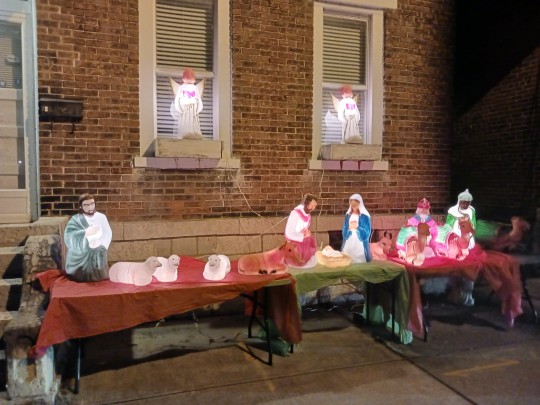


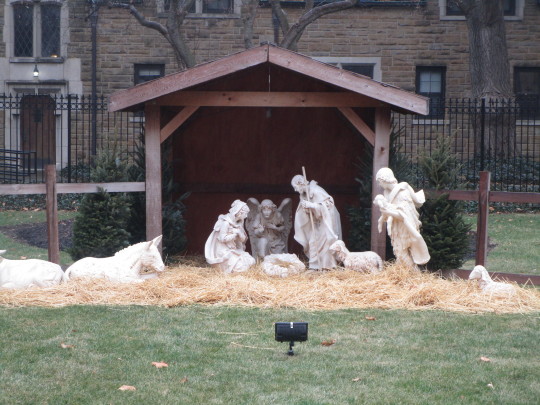









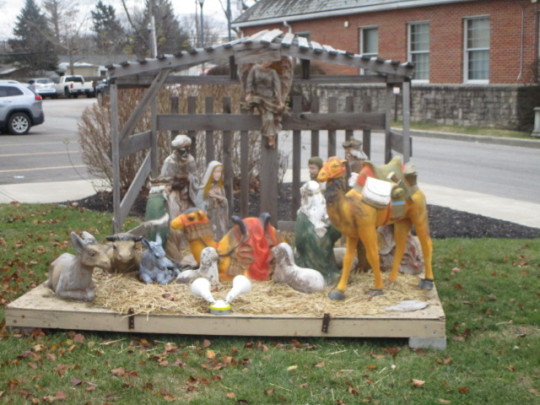

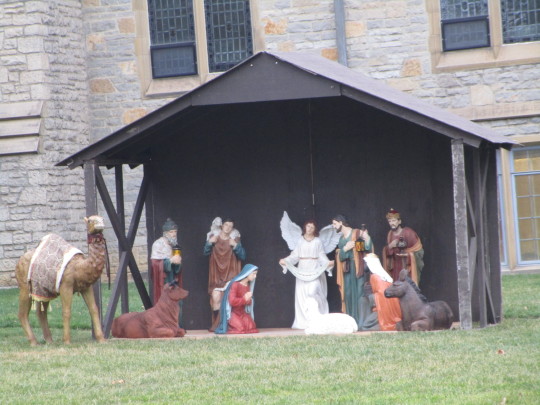
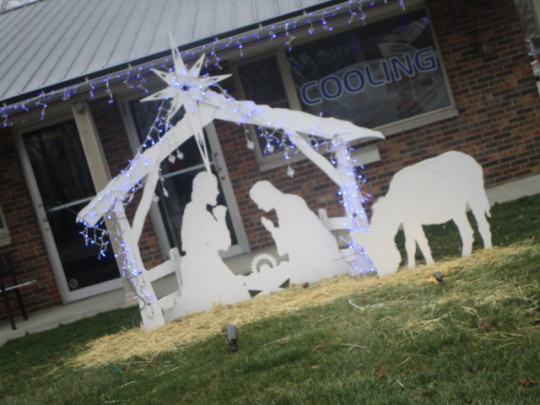
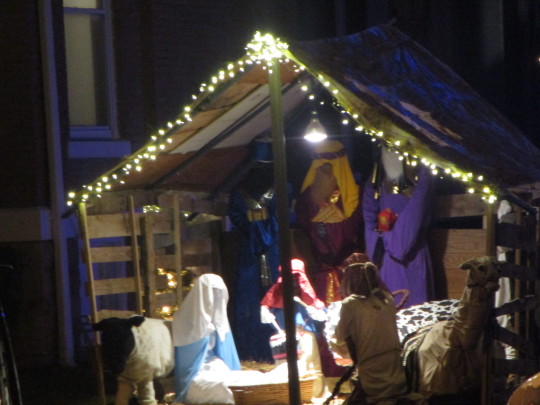
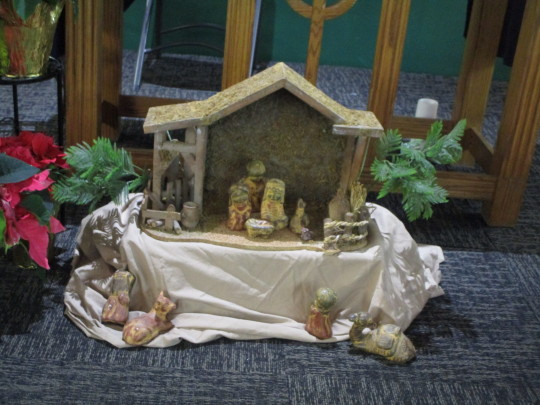

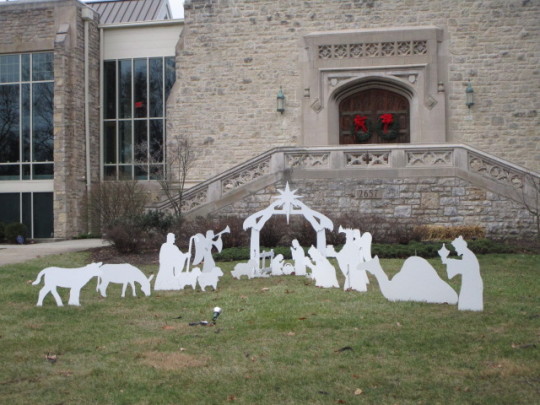
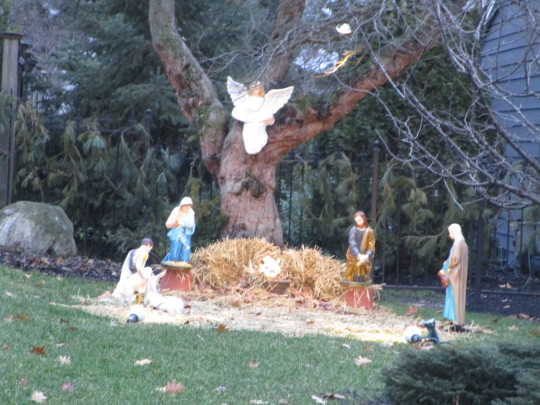

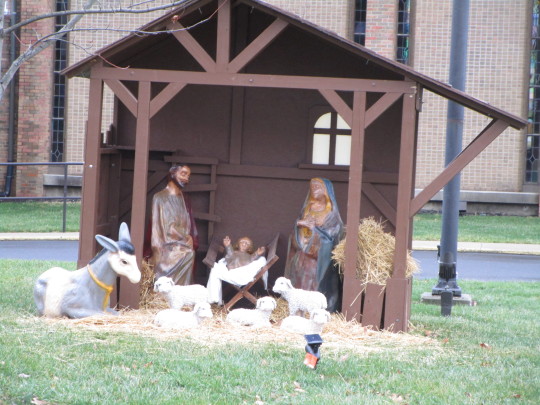

We have 28 Nativity Scenes from all over town, plus two from home that are showcased here.
#christmas eve#djbcht22#nativity scenes#downtown columbus#berwick#bexley#old oaks#german village#the south side#westerville#reynoldsburg#upper arlington#grove city#whitehall
2 notes
·
View notes
Text

On December 25th in the year 1319 a two year truce between Scotland and England began.
This little known peace treaty is often overlooked, probably due to the Bruce’s government issuing the Declaration of Arbroath the following year.
After Bannockburn King Edward II of England never forgot his humiliation, and he threatened war against Scotland. The Bruce got there first, raiding south as far as York in a bid to capture prisoners to be held for ransom. Edward also had his troubles at home with a trebellion.
The King was also talking to some of the great Northern lords and it looked as if they would do a separate deal with the Bruce to stop him destroying their land. Thomas, Earl of Lancaster, was one of the rebel barons but paid for it with his life after the Battle of Boroughbridge was won by forces loyal to Edward.
Encouraged by ending the civil war in England, Edward came north with a great army, but Bruce deployed the same tactics he had used prior to Bannockburn, destroying anything that could be of use to the English, who were forced to retreat when famine and disease broke out.
In September 1319 The Bruce won a decisive battle at Myton in Yorkshire
Earlier that year Edward II had moved an army North and laid siege to Berwick in an attempt to recapture it from the Scots. In response the army of several thousand Scots, commanded by the Earl of Moray and the Good Sir James Douglas, bypassed the Northern town and marched through the north of England torching all in their path. Their secret objective lay in Edward’s court at York; where they hoped to abduct Edward II’s wife, the 21 year old Queen, Isabella. On September 20th 1319 they neared York and The Battle of Myton ensued.
The outcome of this unequal contest was never in doubt. Formed up according to their custom in a single division, the Scots uttered together a tremendous shout to terrify the English, the Highland charge began racing towards the men from York, who straightaway began to take to their heels at the sound.
The York contingent was an odd mixture of men thrown together to meet the emergency, including priests and monks losses were reported of 3,000, among them Nicholas Flemyng the city mayor.
For Edward II, already at odds with many English nobles, it was another disaster. Meanwhile the victorious Scottish army retreated back across the border into Scotland carrying their ill-gotten gains and prisoners.
Afterwards Edward was forced to raise the siege of Berwick and ultimately agreed to a two year truce.
193 notes
·
View notes
Photo

Drawing room mural detail showing a ship, Hamilton House (1785), South Berwick, Maine, by George Porter Fernald, 1907
102 notes
·
View notes
Text

Eastman House in South Berwick, Maine in 1936.
14 notes
·
View notes
Text
On the train heading back to Yorkshire - eventually.
So many trains cancelled due to weather/weather related things like power line being down.
Left an hour later, on a service that had already been delayed by 2.5 hours. Not our train which was entirely cancelled.
We, like everyone else was told, if you’re heading south get on this train, we don’t know when the next one is. If you don’t rebook for tomorrow.
So we got on the train. It doesn’t go to the statin we want, but it’s only a couple of stops from it so we can transfer to a local service.
Plus a few photos from Berwick Upon Tweed - the most northerly town in England - just a couple of miles from the Scottish border.

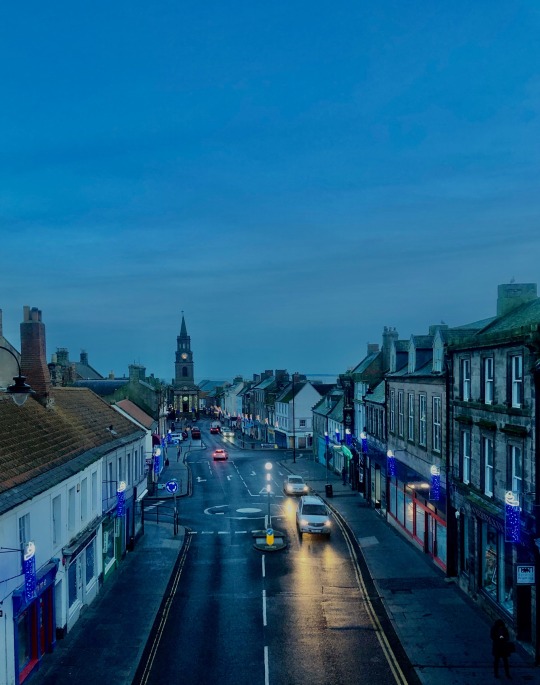

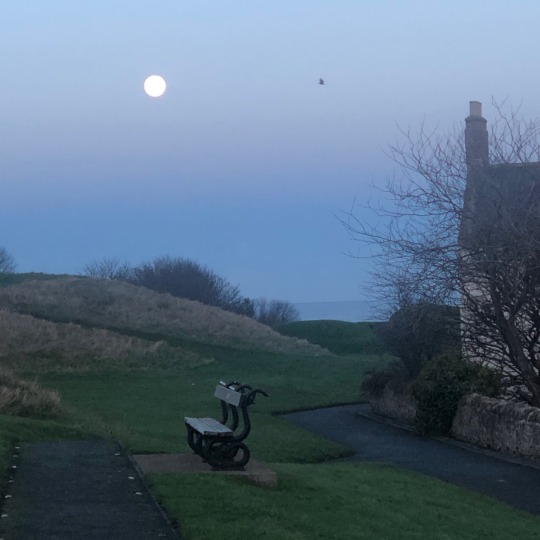
6 notes
·
View notes
Text
roof restoration berwick-roof painting Berwick
Is your roof showing signs of wear and tear? Don't let a tired roof dampen the beauty and integrity of your home. At Elite Roof Service in Berwick, we specialize in breathing new life into roofs. Our dedicated team of professionals is committed to restoring your roof to its former glory, enhancing both the aesthetics and structural integrity of your home.
7 notes
·
View notes
Text
Interview under the cut :-)
Penelope Wilton: ‘I was never a starlet – I wasn’t cast because of a pretty face’
Ahead of her stint in The Unlikely Pilgrimage of Harold Fry, Penelope Winton speaks to Fiona Sturges about her 55-year career in the industry
In a career spanning nearly 55 years, Penelope Wilton has cornered the market in quiet disappointment. As Anne Bryce in the popular 80s sitcom Ever Decreasing Circles, her eyeballs were permanently rotating at the childish antics of her on-screen husband Martin, played by Richard Briers, while in the film Clockwise she was the long-suffering spouse of John Cleese’s calamity-prone headmaster. In Alan Bennett’s Talking Heads series, she played a housewife who couldn’t bring herself to tell her husband she didn’t want to move to Marbella.
In her new film, The Unlikely Pilgrimage of Harold Fry, she plays another wife bottling up her feelings. Wilton is retiree Maureen, whose husband, Harold (Jim Broadbent), receives a letter from an ex-colleague informing him that she is dying. Overcome with unexplained guilt, Harold pledges to travel on foot from his home in south Devon to Berwick-upon-Tweed in Northumberland (500 miles, give or take), where his friend is in a hospice, leaving Maureen alone at home.
“First of all, she thinks he’s mad, and then gets very angry, and then very anxious and upset,” says Wilton. “But slowly she starts to recognise how much her marriage means to her, which she hasn’t in the immediate past because this sadness has thrown them apart.” The sadness relates to their late son, David (Earl Cave), who struggled with drug abuse and who, we learn through flashbacks, died years earlier from suicide. Unlike Harold, Wilton’s Maureen isn’t given the catharsis of an epic journey. Instead, her devastation is conveyed through intense bouts of vacuuming and in clipped phone exchanges with Harold. “You never walk,” she tells him, indignantly. “The only time you walk is to the car.”
Wilton and I are talking on the phone: she doesn’t do Zoom and rarely does in-person interviews nowadays. Though she is never less than polite, I sense that, if she had her way, she wouldn’t do interviews at all.
Nonetheless, at 76, she is showing little sign of slowing down, and isstill averaging a movie a year: last year she reprised her role as Isobel Crawley, mother-in-law of Lady Mary, in the second Downton Abbey spin-off film, A New Era, while in 2021 she appeared in Operation Mincemeat as Hester Leggett, formidable head of the MI5 secretarial unit. She still does bits and pieces of TV, most recently appearing in Netflix’s After Life, where she played a widow sharing a graveyard bench with Ricky Gervais’s grief-stricken Tony. Add to that her distinguished career in theatre and it is no wonder that, in 2016, Wilton was made a dame for services to drama.
When I mention her ability to convey deep disappointment with the subtlest of expressions, Wilton bats away the compliment. “If I get a part that requires me to do that, then I’ll do that,” she says. “But it’s also the case that people don’t go around bursting into tears. Most of the time we try to stop the tears coming and we tend to apologise when emotion overtakes us. It’s an English trait. I have to say I don’t have that trait as a person, but a lot of people have grown up learning to hold their emotions in.” She adds that she is pleased to see younger generations being more vocal about their feelings. “It’s great that they’re not holding it all in, as I think that is unhealthy. This silent world that Harold and Maureen live in, it’s very sad.”
Wilton is known for keeping her private life private, often delivering a stock reply to prying interviewers about it being better if audiences don’t know “my inside leg measurement”. What is known is that she has been married twice: first to actor Daniel Massey, with whom she had a daughter before they divorced in 1984 (he went on to marry Wilton’s sister, Linda), and then to Ian Holm, her co-star on The Borrowers, whom she divorced in 2001.
Wilton says she became an actor “because I wasn’t very good at anything else, and I liked stories and storytelling”. Her father, a businessman, had no interest in the performing arts, but her mother, Alice Travers, had been an actor and dancer. Wilton began going to the theatre at 15 and quickly realised she would “prefer to be on the stage than in the audience”.
But it was Ever Decreasing Circles, one of the biggest sitcoms of its era, that made her famous and which, she says, “I enjoyed more than I can say. People still have a soft spot for it, and so do I. Ricky Gervais loved that series and that’s why he cast me in After Life and why he called my character Anne, as a homage.”Ever Decreasing Circles was at its height in the 80s, when industry sexism meant actresses were often faded out after reaching middle age, but Wilton endured. Was that through tenacity on her part, or luck? “It was probably a bit of both,” she replies. “By the time I began doing film and television, I was already [in my thirties]. But before that I was doing theatre, and the parts for women in the theatre were plentiful. But also, I wasn’t ever a starlet. I played real people. I wasn’t cast because of a pretty face.”
Wilton also attributes her longevity to her ability to get on with people (“I can count on one hand the people I’ve really disliked”), and to play close attention to scripts and go “not for the big parts but the smaller and often more interesting ones that might have one or two really good scenes. It’s a good thing to learn, not to think about the size of the role. A smaller role can change a career.” She once told the theatre critic Michael Billington that, when giving masterclasses, she would tell students to do less acting. Watch any number of Wilton’s performances, and it is clear what she means. “I’m not a fan of big acting,” she reflects now. “I have always found you can achieve just as much by showing less and being real.”
#i know she hates it but I love it that she has to make some much promo for harold fry :-D#penelope wilton#the unlikely pilgrimage of harold fry#downton abbey
7 notes
·
View notes
Text
Tag Game: Find The Vibe
I’ve been tagged by @sillyliterature - thank you! This looks fun
The rules are like Find The Word, but with a phrase instead. In this case, the phrase is “this can’t be real”. Since this is about the vibes, it doesn’t have to be this exact phrase, but something along the same lines or that fits an interpretation of the words.
And I have just the thing from As The World Falls Down, my Prince Alistair AU. I don’t have the exact phrase, so instead I’m going with a sense of denial or disbelief:
Berwick –
His Lordship Loghain Mac Tir, Teyrn of Gwaren, has asked that Redcliffe be placed under watch for signs of a suspected plot, and as his right hand I have reached out to you, having been assured of your discretion and your skills. Enclosed is a sum of 70 Sovereigns in good faith. Your task will be to observe Castle Redcliffe and report any change in its inhabitants or environs. Should you follow His Lordsip’s directive in a satisfactory manner, your compensation will be a further 80 Sovereigns and the knowledge that you have done a great service to your country and to your king.
In my own hand,
Rendon Howe, Arl of Amaranthine
She had to read it twice. The black gulf that had threatened all her reason on the road south stretched out like a great maw to swallow her again, a rage so deep it seized her bones in iron fetters. Once more she heard the confusion of dogs and soldiers, the ring of the bell and the scream of people in the distance as the castle was overrun, the sight of her father’s face drawing pale above the slow seep of blood over the flagstones. Howe’s name on his blue-tinged lips as he slumped against a sack of flour in the pantry.
She had spent the journey to Ostagar wondering why. How he thought he would get away with it, what he had hoped to gain when the king’s ire turned northwards once more. And now, with a few simple strokes of ink on paper, it was like she stood outside her body – outside the world itself, watching the mechanisms of the constellations turn them in their orbit through the sky.
And tagging forward with no obligation: @kittlesandbugs, @minuteminx, @ellenembee, @serenpedac, @asaara-writes, @vhenad4hl and @curvyelf
9 notes
·
View notes
Text
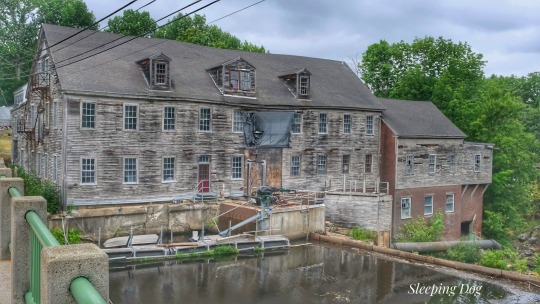
The Great Works River Sawmill, South Berwick, ME
Ph: Sleeping Dog
2 notes
·
View notes
Photo

The southbound Downeaster screams across the Salmon Falls River that straddles the border between Maine and New Hampshire. The fall foliage is 99% gone, but every year, a few delinquent oak trees, such as this one, hang on a little longer than average.
South Berwick, ME
November 14, 2013
6 notes
·
View notes
Note
Hello hello!
Dear wolfie, my sister gifted me a trip to edinburgh next year for my birthday and i'm so excited! (it's a bit of an early gift because we have to organize basically everything but she knew i've been wanting to go and she thought i might just pack a bag and leave, that's how bad i want to go, so she had to tell me)
One of the first thoughts i had was you lmao i was like oh i have to ask them if there's a couple of places i should definitely see and things to do, obviously the classic places yes but maybe there's something i'm missing (i really don't want that to sound like i'm looking for a tour guide so sorry if it's weird)
Anyway, thank you for sharing your writing you are absolutely one of my favorite authors out here xx
Lovely anon, I am so sorry it's taken me so long to get to this for you.
And hurrah! What a lovely gift! I hope you enjoy Scotland while you're here! I mean, I know I'm biased but, it's wonderful.
As for things to do in and around Edinburgh, here's a list of my favourites:
The Botanics - plants and trees! Wide open spaces! A really lovely cafe! And just beside it, one of my favourite areas in Edinburgh...
... Dean Village! This is a protected area of Edinburgh and host to historic and untouched buildings dating back to the 19th Century! The water of Leith also runs through it, and if you follow that you can get to Stockbridge, which is a really nice part of town for cafes, boutique shopping, and just wandering around. The farmers market on Saturdays is brilliant too. Also has some nice charity shops and the Oxfam bookshop which is amazing for vintage volumes and coffee table books. Rare Birds and Golden Hare are also two very good bookshops in the area.
Leith is a cool place to check out if you're into beer/brewing (Campervan is worth a look at), and there is some good shopping up that way too and a nice walk along the Shore.
On the other side of town you have the Old Town and St Giles Cathedral which hosts lots of classical concerts and recitals if that's your thing, and I highly recommend booking a ghost walking tour while you're here. They're cheesy, but really fun and a must for first time visitors. Also, my favourite place in all of the city is Edinburgh Castle. It's expensive, but well worth it if you're a history buff. If you don't want to do the tour though, you don't have to pay to visit the platform.
Little gems around the city: Mary's Milk Bar (best ice cream ever), Dragonfly (amazing cocktails), Wings (for chicken wings and nuggets and about a million different sauces), Armstrongs (a few outlets - second hand/vintage), Paradise Palms (queer-friendly bar with amazing veggie and vegan food and fantastic music), The Salt Horse (cozy brewery shop/pub with great scran), the Cameo cinema (old school cinema up in a really cute area of town where you can also grab an amazing breakfast at Tree House).
This list isn't extensive but these are just a few things I love!
If you fancy a day trip outside of Edinburgh, I'd suggest hopping on the train (or bus) to: Linlinthgow, South Queensferry, Crail, North Berwick. I'm a sea lover and live on the coast myself so I'm a bit biased!
Have fun while you're here!!!!
11 notes
·
View notes
Text
youtube
Watch the American Climate Leadership Awards 2024 now: https://youtu.be/bWiW4Rp8vF0?feature=shared
The American Climate Leadership Awards 2024 broadcast recording is now available on ecoAmerica's YouTube channel for viewers to be inspired by active climate leaders. Watch to find out which finalist received the $50,000 grand prize! Hosted by Vanessa Hauc and featuring Bill McKibben and Katharine Hayhoe!
#ACLA24#ACLA24Leaders#youtube#youtube video#climate leaders#climate solutions#climate action#climate and environment#climate#climate change#climate and health#climate blog#climate justice#climate news#weather and climate#environmental news#environment#environmental awareness#environment and health#environmental#environmental issues#environmental justice#environment protection#environmental health#Youtube
3K notes
·
View notes
Text
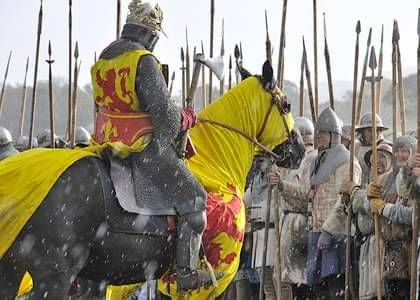

On 8th January 1313 the forces of Robert Bruce seized Perth from the English garrison.
This victory was significant as it brought all of Scotland north of the Forth under Bruce's control. However, it was also a source of embarrassment for later Scottish writers seeking to cast King Robert in a positive light, as the events of 8th January seem to have degenerated into a bloodbath.
By 1313, the tide of the war had very much turned in Bruce's favour. He had defeated his main Scottish opponents at the Battles of Inverurie and the Pass of Brander in 1309, survived an English invasion of Scotland in 1310-11, and even begun raiding into northern England. 1312 had ended on something of a sour note when the barking of a dog had thwarted a Scottish attempt to capture Berwick by surprise, but undeterred Bruce marched his men north to lay siege to Perth.
Perth was no easy target - its castle had not been rebuilt since a flood a century earlier but it was still protected by a wall and a water-filled ditch. It seems that Bruce was counting on the English being unprepared for the Scots to keep up the military pressure on them during the frigid Scottish winter (normally, the campaigning season would last from spring to autumn at the most, as I have pointed out in previous posts, I call it “the battle season”)
Both the contemporary Lanercost Chronicler and the late Scottish writer John Barbour blame the fall of Perth at least in part on the negligence of the garrison. On the night of 7th January, under cover of darkness, the Scots surged across the ditch in force and threw ladders against the wall, pouring into the town and overwhelming the unprepared defenders. By the morning of the 8th, Perth belonged to Bruce.
The aftermath of the capture of Perth is a source of some disagreement among contemporary and near contemporary historians, possibly because many of those writers felt uncomfortable with the facts as they saw them. The earliest surviving account comes from the Lanercost Chronicle, which claims that those in the town 'who were of the Scottish nation' were put to death, although the Englishmen there were allowed to return home.
The earliest surviving Scottish account of the incident - written by John Fordun in the 1360s - states that 'the disloyal people, both Scots and English, were taken, dragged and slain with the sword', although he attempts to mitigate this by emphasising that their disloyalty is what earned them this fate and adding that the king spared anyone who begged for mercy.
Writing about a decade after Fordun, the Scottish poet John Barbour - who was writing for Robert II, addressed this aspect of the capture of Perth simply by denying it, claiming that Bruce had specifically ordered his men not to kill anyone unless they refused to surrender without a fight. Despite Barbour's protestations, it would seem that the capture of Perth was accompanied by considerable bloodshed. If we are being generous to Bruce - and most historians who have written about the fall of Perth have been inclined to be just that - any executions after the town's capture can be understood as a very emphatic way of discouraging disloyalty among his subjects in other towns around the kingdom, a common enough tactic in medieval warfare, these were brutal times.
King Robert could now claim to control all of Scotland north of the Forth. Further offensives later in the year secured Bruce's control of the south-west, so that by the end of the year only Lothian and the Borders remained in English hands. By late spring The Bruce controlled almost all of Scotland .
Stirling castle was still under the control of English forces but was under siege from the Scots led by Edward Bruce. Bruce and the English commander, Sir Philippe de Mowbray, came to an agreement that if English forces had not reached the castle by midsummer 1314, Mowbray would surrender the castle to the Scots. Bruce even let Mowbray leave the castle to inform the English king of the agreement, the scene was set for the Battle of Bannockburn.
23 notes
·
View notes
Text
Geography in 1500, England-Part 1-basics
I myself was wondering how all the land under English Crown was divided in Tudor times. Except from 1510 sumptuary law gives a clue:
“That no one who does not possess the title of a lord, and who is not a Knight of the Garter, may wear any woolen cloth manufactured outside of England, -Ireland, Wales, Calais or Berwick, "or the marches of the same."
Hence according to Tudors English Crown consisted of England, Ireland, Wales, Calais, Berwick + the marches(which were within England).
Not Marshes as this:
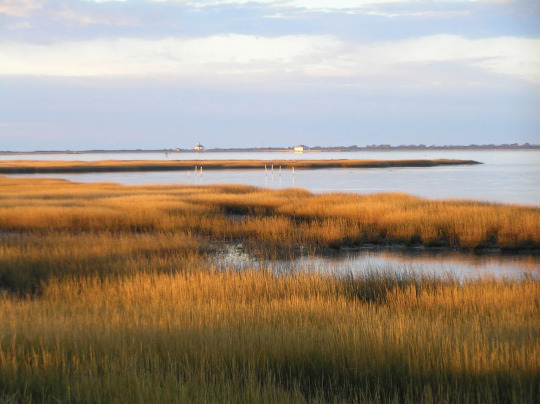
But as border areas. There were two marshes-Welsh Marsh, next to Wales. Ludlow was located in Welsh Marsh-hence technically still within England, and then there was Scottish Marsh in the North.
Ireland had lots of indenpendent territories which didn’t aknowledge Tudor rule at all, and then English Pale, but I’ll do separate post about Ireland itself and explain more in detail there.
Wales was once idenpendent but even before War of Roses fully under the control of English.
Calais is city nowadays in France, but it was English right until reign of Mary I. It was english enclave and important trade connection between island England and continent.
By the way, it wasn’t formerly part of Normandy, it’s bit more up North from that...and was actually captured by English in 1347 and stayed English until 1558, when Mary I lost it to France.
You probably knew all of that. But what the hell is Berwick?!
Well, actually there are several towns called Berwick.
I believe the record is talking about Berwick-upon-Tweed(or on the Tweed).
(Historically it was called by Scottish as South Berwick, because they also had another town called Berwick more North, which they called North Berwick).
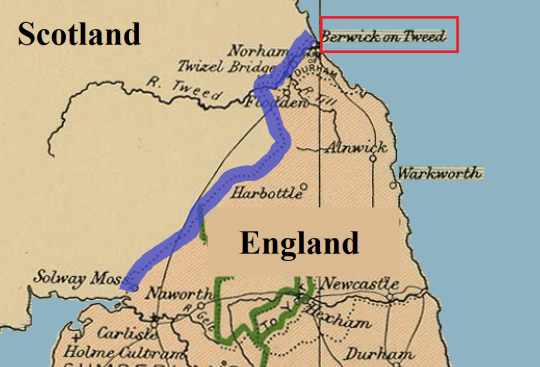
A town on Scottish/English border, over which they fought many times and it changed many hands. But it seems the town had different status than any other town, and in 1551 Berwick was declared to be free town, indipended from either Kingdom. In practise controled by English, but had independed borough, outside of authority of any English county. The wording of sumptuary law in 1510 suggest Berwick had similiar status even long befor this.
(Maybe just not officially.)
It was sort of enclave, like Calais, with special rules.
Interestingly the town was offered by Margaret of Anjou to Scottish in 1461(for their support) and before Richard III proclaimed himself king, in 1482 he recaptured the town from Scottish. Scottish didn’t accept this conquest, in their documents it was still Scottish many years later, but in practise the town remained English ever since. Elizabeth I spent massive funds for fortification of the town. So clearly it was very important.
Until Scottish and English crown united in 1603.
And then there are/were islands. And quite often it is mentioned in records(or on wikipedia) that somebody (nobles) in times of distress(like political situation being unstable) would seeking shelter/refuge upon these islands...
If the island was separated only by narrow strait from mainland, it was much easier to govern, and was offically part of the mainland territory.
For example to the South of Englad we have Isle of Portland(source of Portland marble) and Isle of Wight. They were part of Kingdom of England.
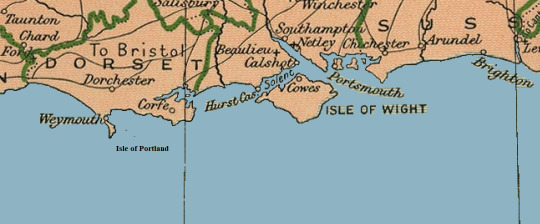
Isle of Wight again:
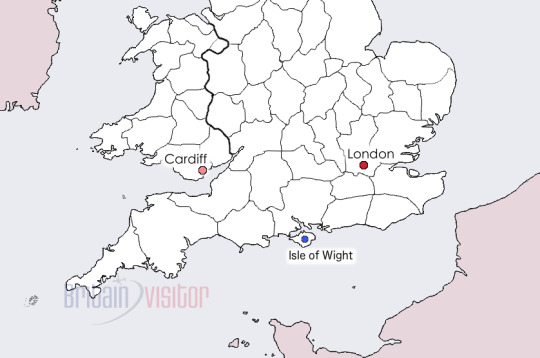
To west of London is Isle of Sheppey:
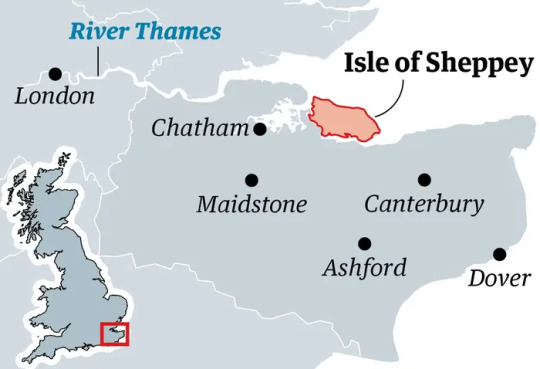
And to N-W of Wales is Anglesey and Holy Isle-which were part of Wales:
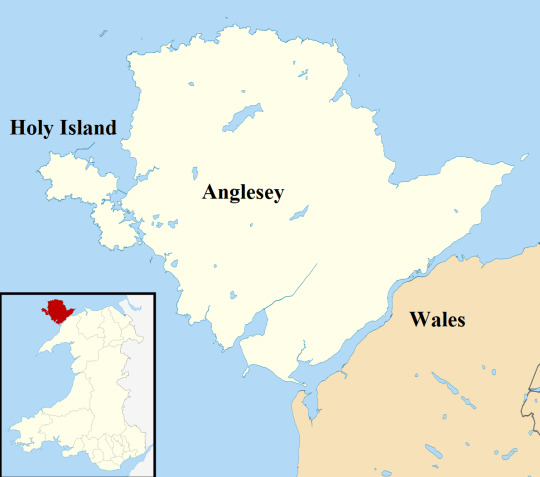
But what if Island is further away?
To West of Cornwall(S-W England) are Isles of Scilly:
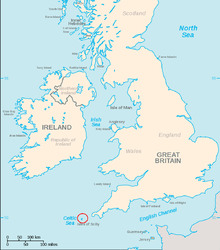
Also called Sorlingas (Spanish, Portuguese) or Sorlingues (French). In the Cornish language, the Isles of Scilly is Syllan.
They are further away, but still under control of English since before 1000, and were part of England.

However, there are islands, which never became part of English Kingdom(nor Wales) but were under English Crown. For centuries.
Nowadays they are the dependencies of the British Crown(not to be confused with overseas crown depencies) They are still under same monarch, but have their own goverment, passport etc.
Some of them now claim they had special status since medieval times, it is not confirmed as far as I know.
But due to them being further from England, it is likely they had some level of automy and special governing from before Tudor era. Even if it wasn’t offical. They are simply not close enough to any mainland coast for it to be easy to control them. But probably because it wasn’t official that Sumptuary law didn’t mention them. (It could be just traditional...)
-Isle of Man, which is located in Irish Sea between Ireland, Scotland, Wales and England:

In past it was conquered by vikings, and in 13th century Scottish King bought it from Norway in 1266, but in 1290 English seized it. In 1313 Scottish retook it, and then for rest of 14th century it kept changing hands. But by beginning of 15th century it was in English hands and would be ruled by Stanleys.
-and the bigger of the Channel Islands(not to be confused with Californian Channel Islands).
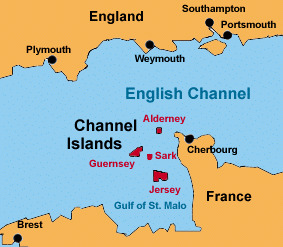
I am talking about islands in English Channel(La Manche, sometimes they are refered to as Norman Islands, and that is pretty accurate.
The channel islands originally belonged to Duchy of Normandy and when English lost the mainsland Normandy and they managed to keep those islands.
-Biggest islands being Guerseney, and Jersey and then smaller Alderney, and many smaller islands:

But that is not entire story. Because English kept the bigger ones, which are now considered Channel Islands, but during Tudor times, English abandoned the smaller Chausey islands and eventually French took hold of them.
On wiki you can find that Chausey Islands were administered from Jersey until 1499, when the Jerseymen abandoned it to the French for reasons unknown. The Jersey historian Alec Podger has suggested that it was too costly in terms of money and manpowower.
Addionally I am truly confused in how Channel Islands are described nowadays. Because I literally never came upon word bailiwick before.
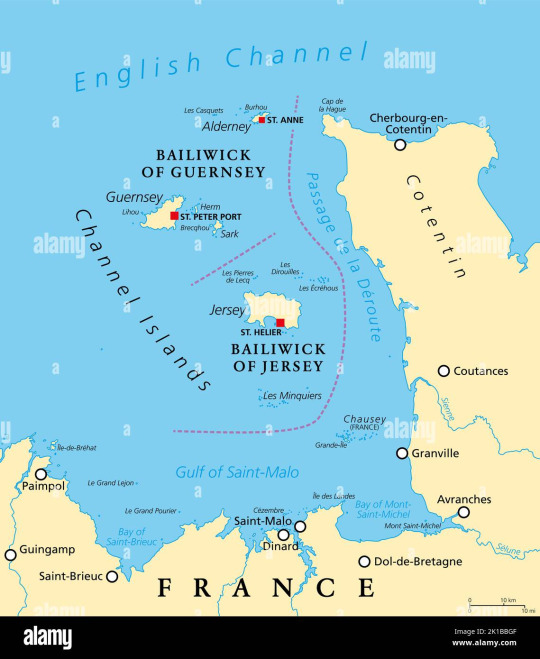
There is Bailiwick of Jersey and Bailiwick of Guernsey. That’s their official name. But what is it? Well, I read the definition several times and I am no wiser.
Best I understand it(and I might be completely wrong) it is Administrative term originating in french language, which sort of groups those islands together under the name of the biggest island. Sort of like town of Buckingham gives name to Buckinghamshire, but with islands.
If somebody understands it better, I am all ears.
Another thing you should know, that English coast nowadays and back then is not same. From Arthurian legends you probably know erosion occured on big scales even back then! (One of Arthur’s knights was prince of Kingdom West of Cornwall which sank under sea.)
But strangely the coast also can grow bigger.
WHAT?! What the heck you mean?’ -you asked.
Allow me to demonstrate-this is reconstruction of Harlech castle(in Wales)-how it used to look:

In botton of the picture you can see it had access to the sea, and it could be supplied by ship. Maybe this is better:
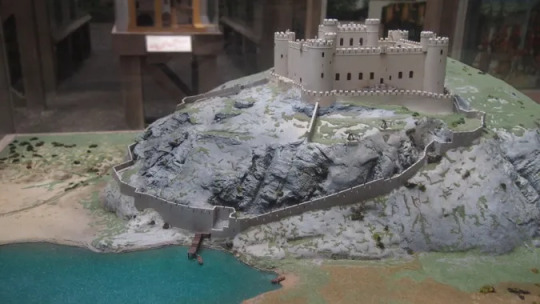
And this is current view from Harlech castle from google maps:
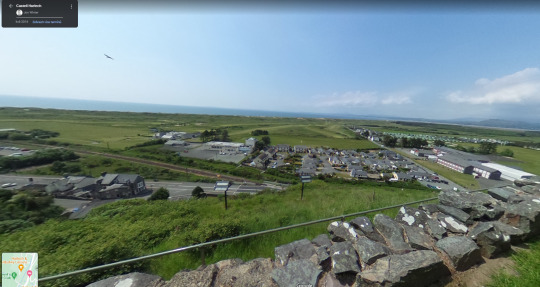
The sea is several km away and there are many buildings in places where once the sea was. Overtime sediments build up in the place, and coast grew!
It’s not the case that west coast grows and East disappears, it’s more complicated than that...But important is, the coast is changing and if you ever time-travelled, be aware.
So I hope you’ve learned something new from this.
5 notes
·
View notes
Text

Hamilton House at Vaughan Woods State Park in South Berwick, Maine.
12 notes
·
View notes
Text
Northumberland Coast November Road Trip
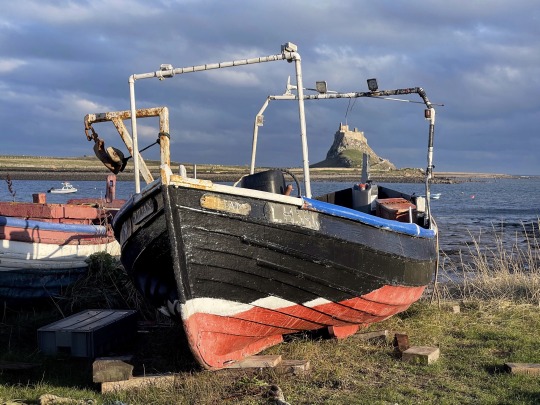
England in November is a season of shorter days and falling temperatures. We expected the weather for our Northumberland coastal road trip to be mixed, and that’s exactly what we got. At times, the conditions were challenging due to considerable periods of drenching rain and temperatures that barely reached double figures.
A road trip along Northumberland's beautiful coast, at any time of year, from Amble in the south to Berwick-upon-Tweed on the northern borders of Scotland, displays some of Britain's finest beaches and spectacular views. An Area of Outstanding Natural Beauty (AONB), this stretch of England’s most northern county is home to expansive stretches of stunning shoreline, wind-swept sand dunes, historic ruins, and charming fishing communities.
The November sun rises just before 8 am and sets about 4 pm, so I didn't have to worry about setting my alarm too early. Since there are less visitors in the area at this time of year, the coastal scenery can be explored without the crowds, having miles of beautiful Northumberland beaches virtually all to ourselves. We found some businesses and attractions understandingly closed or operating less frequently for the winter season. Finding tables at restaurants was easy whereas in the summer months booking ahead would be a necessity.
Our journey spanned five days, which gave us plenty of opportunities to leisurely explore the different places we visited, sometimes even retuning the next day, and time to shelter from the harshest weather conditions. The trip could easily be completed in half the time, especially within the longer days of summer.
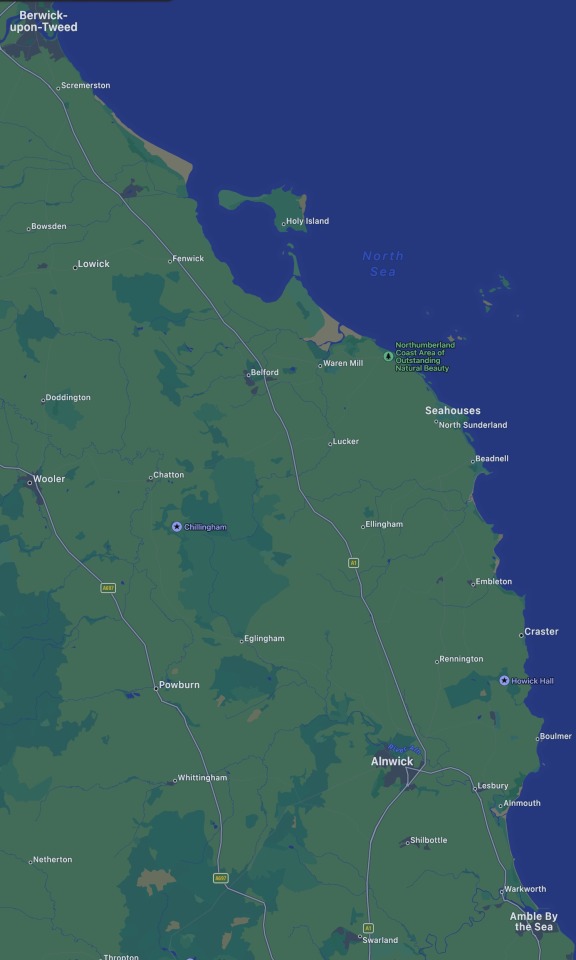
Northumberland map
Highlights of Our Northumberland Coast Road Trip
Amble
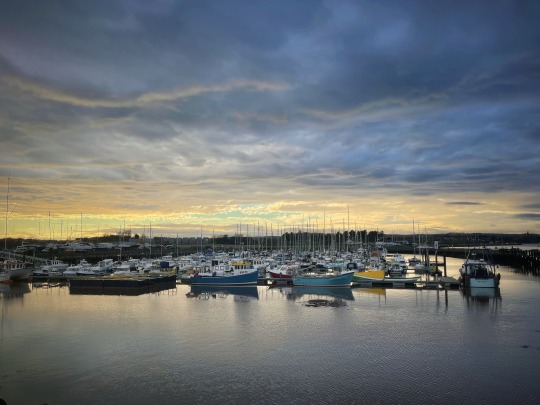
We begin our tour in Amble, known as "The Friendliest Port". A quaint harbour town at the mouth of the River Coquet that can be considered as the southern gateway to the Northumberland Coast. Harbourside seafood restaurants, brightly coloured beach huts, independent retail pods, and a sizable pier can be found in this increasingly popular town.

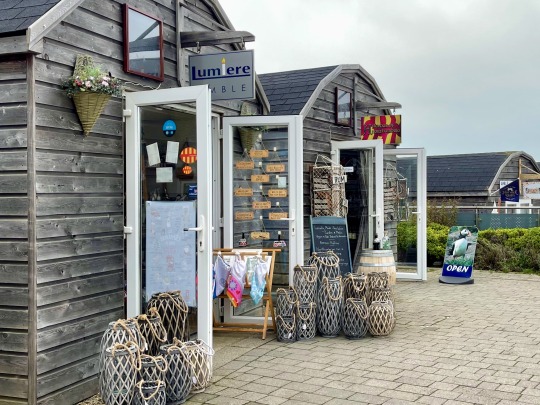
Amble still functions as a working port and has a small fishing fleet. A 250 berth Marina, situated on the banks of the River Coquet, offers a range of boat yard services. Boat trips operate in the spring-time to view wildlife, notably puffins and roseate terns, on Coquet Island. Sitting a mile off the coast and crammed with birdlife for half the year, the island is a Royal Society for the Protection of Birds (RSPB) managed nature reserve. Boat landings are not permitted and only RSPB wardens are allowed onto the island.


Amble gained the nickname 'the friendliest port' when on 3rd July 1935, the local Council sent the RMS Mauretania a telegram on it's last voyage to the the wreckers yard in Rosyth. 'Still the finest ship on the seas'. To which Mauretania replied with, "Thank you to the last and kindliest port."
Craster
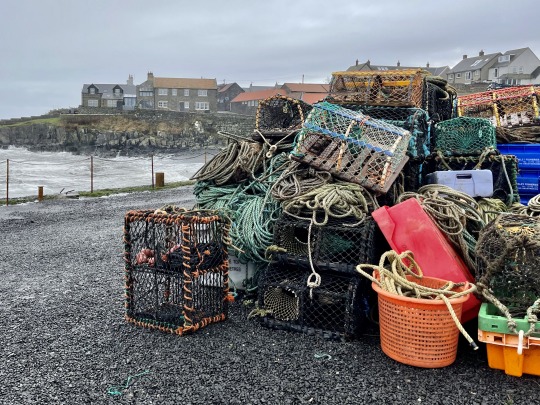
Moving approximately 15 miles north, we reach Craster, a remote coastal haven set amongst rugged rocks, dramatic coastline and beautiful countryside.


Craster has a small harbour shielded from the wind-whipped North Sea by the guarding embrace of two solid piers. These concrete harbour walls were being put to the test as we arrived. As enormous wave swells pummelled the sea defences with amazing force, we were reminded that no matter how picturesque this coastline may be, the sea can nevertheless be brutal and unforgiving,

As soon as we stepped foot in the village, we were aware of the enticing smell from the L. Robson & Sons fish smokeries. Craster has a reputation for some of the most delicious oak-smoked kippers in the country. Fish is still being cured in the ancient smokehouses, which date back more than 130 years, by this fourth-generation family business.

Craster more than makes up for its lack of beaches with a breathtaking, volcanically formed, rocky shoreline. A relatively easy, one mile walk along the headland provides breathtaking sea views as you approach the imposing ruin of Dunstanburgh Castle. One of the most atmospheric and inspiring castles in England, Dunstanburgh Castle was built in the 14th century.
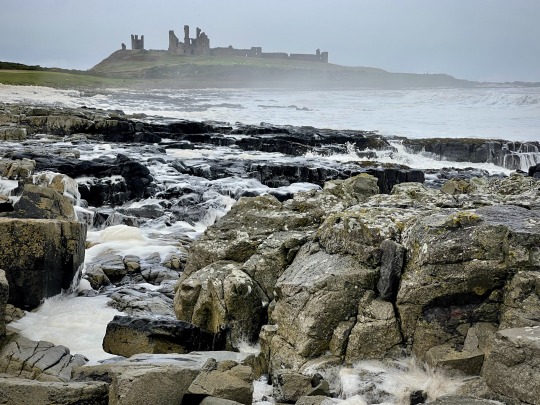
With over 700 sites—more than any other county in England, you will see plenty of castles on your journey up the Northumberland coastal route. This is due to the rather violent past with neighbouring Scotland to the north.
Seahouses

Further up the coast, the bustling market town of Seahouses offers everything you may want for a conventional coastal getaway. A variety of shops, restaurants, pubs, ice cream shops, and fish & chip eateries can be found in addition to fantastic sea views.
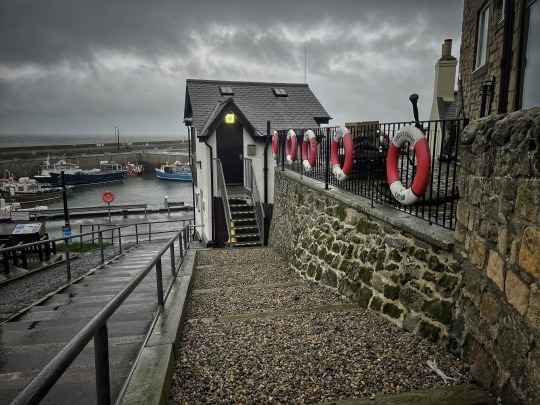
I have a fondness for Seahouses that stretches back over a decade or more. Known to many as ‘The entryway to the Farne Islands’ which are located two to three miles offshore. I’ve made the crossing over to the islands many times to photograph nesting sea birds. As well as being the most famous Sea Bird Sanctuary in the British Isles, the islands are also home to a large colony of Grey Seals. Birds that frequent these islands for nesting include Puffins and several breeds of Terns. Boats depart daily from the busy, colourful harbour.


There are beautiful beaches to the north and south of Seahouses, with the northernmost one being the most popular. Bamburgh Castle provides a magnificent backdrop to this expansive sandy beach which is bordered by grassy sand dunes.

Avian Flu
The worst bird flu outbreak to ever affect the UK has occurred during 2022, and experts have cautioned that the infection rate could increase even further throughout the winter of 2022-2023. The outbreak has had a huge negative impact on agriculture and the environment, killing 97 million birds worldwide (3.8 million in the UK). In response, the Farne Islands have been closed to visitors over the breeding season, as officials attempted to stem the spread of the infections. There is still a worrying battle ahead to rid our shores of this rampant killer disease.
Bamburgh
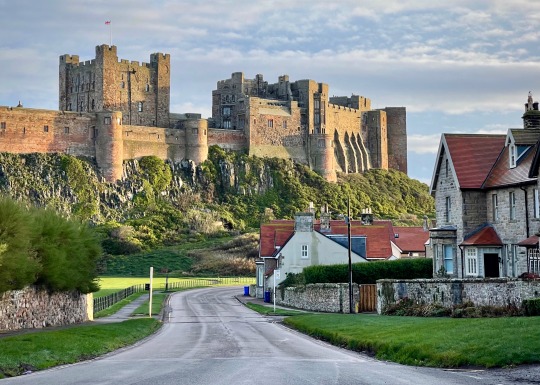
Bamburgh is the next-door neighbour to the community of Seahouses. A picture-postcard village, with English tea rooms, stone cottages, gift shops, eateries and B&Bs. The magnificent, 1,400-year-old Bamburgh Castle is seen before you even get to Bamburgh, majestically rising from the dunes system that fringes the beach, it literally is the stuff of legends.


The castle commands sweeping views of a 2.5-kilometer long, immaculate sandy beach with the Farne Islands, Holy Island, and Lindisfarne seen in the distance. Due to its lofty position, Bamburgh Castle is a beautiful subject for photos when shot from the beach.
Holy Island

Any visit to the Holy Island of Lindisfarne begins and ends with the vagaries of the tide. The island is cut off from the mainland twice a day during high tide when the causeway that connects the mainland to the island is submerged.
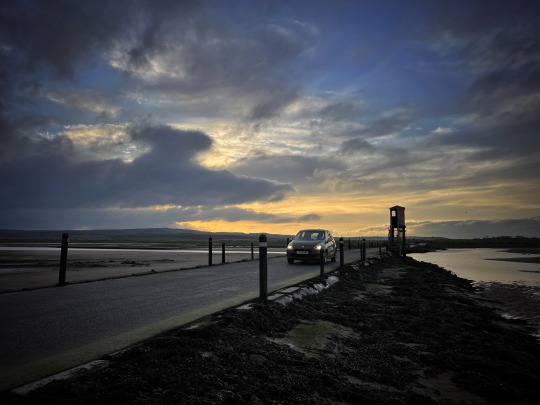
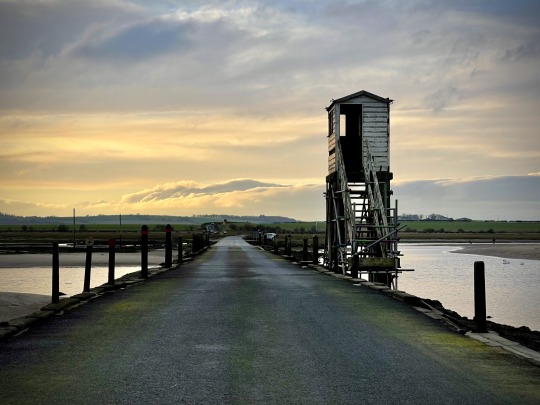
Crossing Holy Island’s causeway is a great experience, beautiful and sometimes eerie. The Road is approx 3 miles long and takes about 10 minutes to drive. Close to the start of the causeway is the famous refuge shelter for anyone unlucky enough that gets caught out by the tide. If you are unfamiliar with the causeway and the workings of the tides, it is best to educate yourself first, so long as you plan your visit for the right times, there is really nothing difficult to the crossing. I double-checked the crossing times before planning our trip.

Holy Island is steeped in history with spectacular coastal scenery. Whether you're interested in history, religion, walking, birdwatching, nature, or beaches, or like me in photography - Holy Island boasts a variety of attractions and activities. I think that it’s safe to say that most visitors are attracted by the extensive ruins of a 12th-century priory church and the associated monastic buildings. The equally famous Lindisfarne Castle is the other main visitor attraction.

Local boats moor iIn Holy Island Harbour, known as The Ouse. The legendary upside-down boats on a muddy area next to the beach are old herring boats that have been converted into fishermen's sheds.

Lindisfarne Castle dates back to the middle of the sixteenth century and was first used as a garrison. The castle, which is positioned atop the volcanic rock formation known as Beblowe Craig and is one of the Island's most recognisable and appealing sights, can be seen for miles in all directions. The castle we see today was constructed by renowned architect Edwin Lutyens beginning in 1903 and is an amazing blend of a Tudor artillery fort and an Edwardian country home.

Reconnecting with some of our favourite places along the Northumberland Coast has been a wonderful experience. Who wouldn't be captivated by this special place? It's every bit the wild coast you'd want for photography inspiration.
All images © Adrian McGarry
www.adrianmcgarry.com
#Road trip#northumberland#northumberland coast#coast#coastal photography#coastline#amble#craster#Seahouses#bamburgh#dunstanburgh#lindisfarne#holy island#sea#ocean#lighthouse#castle
9 notes
·
View notes